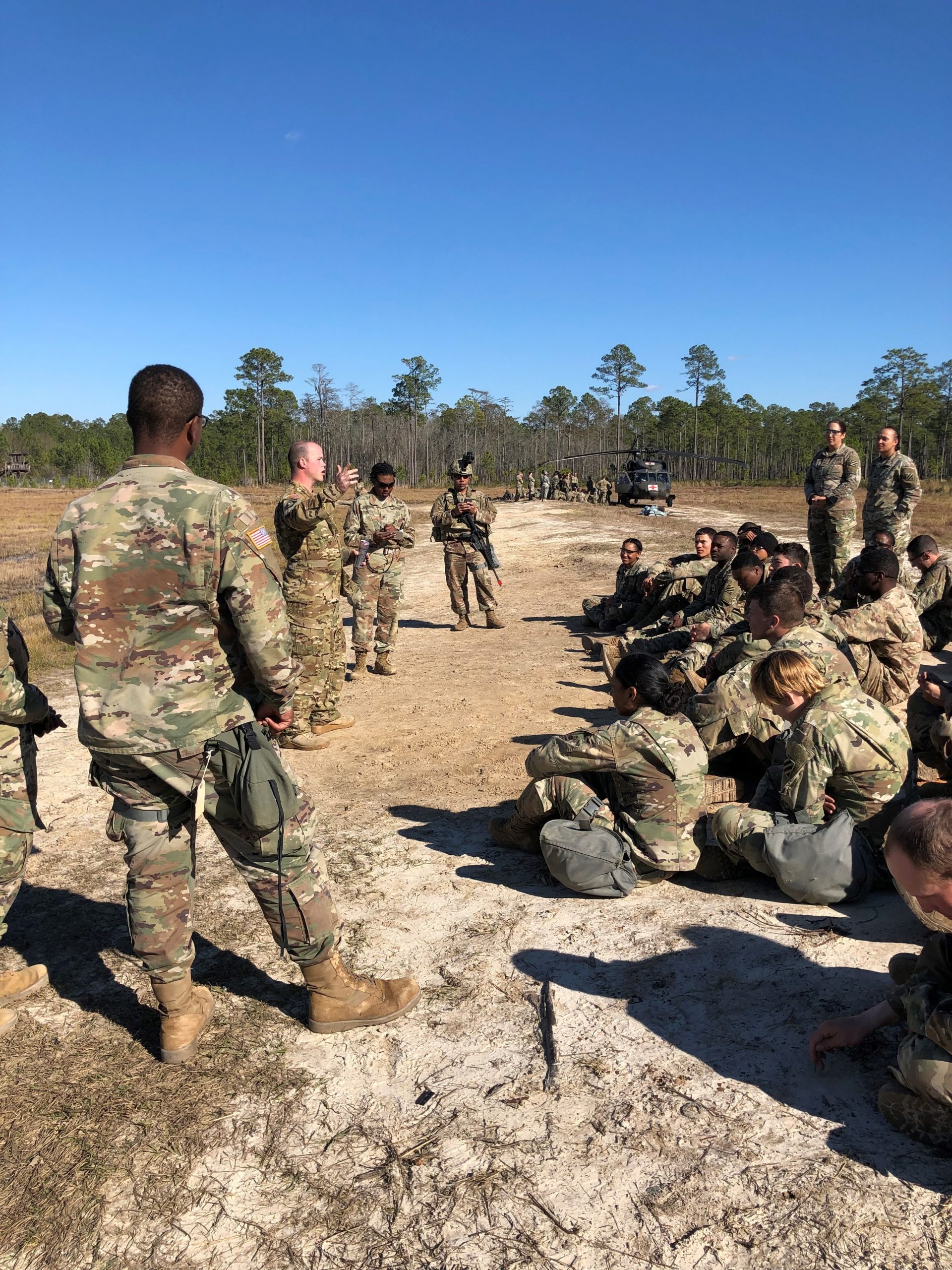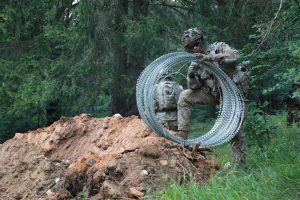The First Four Years: Career Considerations for Junior Officers in the AIM environment.

AIM 2.0
In 2019 the Army introduced a new system to improve talent management and retention rates among officers. The new system, “Army Interactive Module” (AIM), is a web-based application that empowers officers by allowing them to preference assignments and take a more active role in career management. This system is a powerful tool for officers seeking new assignments and career growth but may mislead junior company-grade officers who do not understand the subtle differences of Army units.
Domains of Leader Development
“Institutional, Operational, and Self-Development,” are the three domains of leader development. Institutional development is the foundation of officer development; it starts at the commissioning source, is refined in the basic officer leadership course (BOLC) and is built upon through continued professional military education (PME) and civilian education. Operational development is the second domain of leader development and is “experience gained through on-the-job training in a variety of challenging assignments and additional duties preparing officers to lead and train Soldiers, both in garrison and ultimately in combat.” [i]What’s important to note regarding operational development is that operational development is directly impacted by the assignments an officer has.
Assignments are not created equal
The AIM marketplace can mislead lieutenants by showing open assignments across various Army Commands that have the same name in the title but provide different experiences on the ground. Example: a company executive officer in the Training and Doctrine Command (TRADOC) and a company executive officer in Forces Command (FORSCOM) hold the same name in the title but offer different experiences in the realm of leader development.
Assignments impact development
The Army’s overarching mission is to “deploy, fight, and win our nation’s wars by providing ready, prompt, and sustained land dominance as part of the joint force of all US military.[ii]” The major command that specializes in this mission is FORSCOM. FORSCOM units “train, mobilize, deploy, sustain, transform, and reconstitute assigned conventional forces, providing relevant and ready land power to Combatant Commanders.” [iii] A lieutenant that serves as a platoon leader, executive officer, and or battalion staff officer in FORSCOM for 24 months will have a better fundamental understanding of how the Army operates and contributes to the Army mission at the battalion level.
Key Development
Key Development (KD) completion signals to the Army that you have completed an assignment designated by your branch as fundamental to your military occupational specialty (MOS). KD completion also conveys to your future Commander or first line leader that you have a fundamental understanding of how your branch contributes to the unit’s mission. “KD complete” is often a term used for captains and above, but I would argue lieutenants have KD time as well, specifically as a platoon leader, company executive officer, or battalion staff officer. A solid foundation as a company grade officer is essential to an officers’ growth as junior officers will transition from a lieutenant executing the Troop Leading Procedures to a captain expected to contribute to the Military Decision-Making Process (MDMP).
Lieutenant Key Development
Platoon leader – As a platoon leader, you will learn the importance of counseling, motor maintenance, commo maintenance, your company’s mission essential task list (METL), training plans via the Army Training Network (ATN), the importance of training meetings, and more. After platoon leader time you are better prepared to serve as a company executive officer (CO XO) and assist in the development of other lieutenants as they go through their maturation process.
Company Executive Officer – As the CO XO, you will assist your Commander in maintaining the company’s readiness and deployability. You will be tested in the form of emergency readiness deployment exercises (EDRE) and learn how the Army projects combat power from the port of embarkation to the port of debarkation. Publications such as the TB 55-46-1 and terms such as Automated Air Load Planning System (AALPS), and Transportation Coordinators’ Automated Information Movement System (TC AIMS) will become second nature to you as you will understand what it takes to maintain readiness and deploy a company in support of unified land operations (ULO).
Battalion Staff Officer – Battalion staff is where you learn how the staff supports the Commands at echelon. You learn the intricacies of the relationships between higher headquarters, battalion, and subordinate units, with the understanding that Command priorities are nested and require staff support for mission accomplishment. Your time as a platoon leader or company executive officer will make you a better staff officer as you will understand how decisions as a staff directly impacted the line companies. If your path does not follow the PL, XO, BN Staff pathway it is ok, the key is to learn the relationships of the staff, companies, and how they are interconnected.
Advice for lieutenants
Laying the foundation: If I would have left FORSCOM after my first year as a platoon leader, I would not have had the fundamental knowledge of how the Army operates prior to my time as a Company Commander and brigade primary staff officer. In fact, I would argue that I may have been passed over on Command as Company Command is a competitive billet where you must submit your file and compete against your peers. The foundation you set as a lieutenant is key to your success as an Army officer because your assignments are essentially your resume. Your officer record brief (ORB) tells a story to your future Commander. You have a role in writing that story, the story should be written by you, but guided by DA PAM 600-3, “Commissioned Officer Professional Development and Career Management.”
Maximize your lieutenant years: In my current position, I review officer record briefs and resumes of officers interested in our unit. I’ve reviewed files of young lieutenants with one assignment on their officer record brief (ORB). When I come across these officers, I question if the young officer understands what is expected of them and if they can execute their basic branch duties; furthermore, I question if they are ready to operate in an environment where decentralized execution is key and where there are not as many Soldiers and resources that will aid in their development. You get four years as a lieutenant; maximize those years and learn as much as possible, the tolerance of mistakes and the learning curve shifts when you become a captain.
Master the fundamentals: When your AIM windows open, and you see destination cities such as Los Angeles, Chicago, Miami, Dallas, New York City, Austin, Baltimore, ask yourself, “if I leave today, can I successfully perform a KD position in my basic branch?” If you can answer yes with confidence, I encourage you to pursue an assignment outside of FORSCOM such as the United States Army Recruiting Command (USAREC). If you are not confident in your ability as a company grade officer or know there are areas you are weak, I encourage you to remain in a FORSCOM unit. Use your lieutenant years to master the fundamentals; use your lieutenant years to grow, use your time as a lieutenant to prepare for you time as a captain. At the Captain’s Career Course, you will reunite with your peers who may have more experience and expertise than you, simply due to how they spent their lieutenant years. Remember, if you do not get the opportunity to broaden as a lieutenant, I assure you, you will have time as a captain. As a captain you can compete for fellowships, attend graduate school, volunteer for a tour outside of your branch, and other opportunities to broaden. Through it all, aim carefully and choose the assignment that’s right for you.
Helpful resources:
DA PAM 600-3 – This publication, “Commissioned Officer Professional Development and Career Management” serves as a guide for your Army career. Use this publication as you build your five to ten-year plan and read it to gain an understanding of the assignments, certifications, qualifications, and level of education expected as you progress in your career.
Army Training Network – The Army Training Network (ATN) should be a favorite in every lieutenants search bar. On the site, you will find “The Platoon Leaders Guide to Training Management,” Task Training Evaluation Outlines (T&EOs), and other resources that will help you as you train your platoon, assess, and improve your company’s deployability, and or assist your battalion S-3 with the planning of training exercises and certification exercises. https://atn.army.mil/
Combined Arms Training Strategy (CATS) – The CATS website provides the mission essential tasks list (METL) and the unit tasks list (UTL) for every type of unit the Army has. These lists are proponent approved and highlight the necessary tasks for mission accomplishment based on the unit’s core capabilities. Like the ATN, CATS should be used to train, assess, and certify the units you lead.
[i] DA Pam 600-3 2-3 “Domains of Leader Development.”
[ii] The Army’s Vision and Strategy | The United States Army
[iii] https://www.army.mil/organization/
MAJ Askew is a Signal Officer who commissioned as a Distinguished Military Graduate through Virginia State University in 2013. MAJ Askew is a MG James Wright fellow and has served as a platoon leader, executive officer, assistant S-3, CO CDR, BDE S-6, and BN XO. MAJ Askew currently serves as the BN XO for the Los Angeles Recruiting Battalion with a follow-on assignment to the Cyber Protection Brigade.
Related Posts

Fighting as an Enabler Leader
(U.S. Army Photo by Cpl. Tomarius Roberts, courtesy of DVIDS)Enablers provide capabilities to commanders that they either do not have on their own or do not have in sufficient quantity …

Defeating the Drone – From JMRC’s “Skynet Platoon”
If you can be seen, you can be killed—and a $7 drone might be all it takes. JMRC’s Skynet Platoon discuss their TTPs to defeat the drone.

3 Deployments Before Captain: Reflections From Down Range
Deployments challenge junior officers beyond their primary duties, often demanding adaptability, wellness management, proactive leadership, and moral integrity maintenance.
